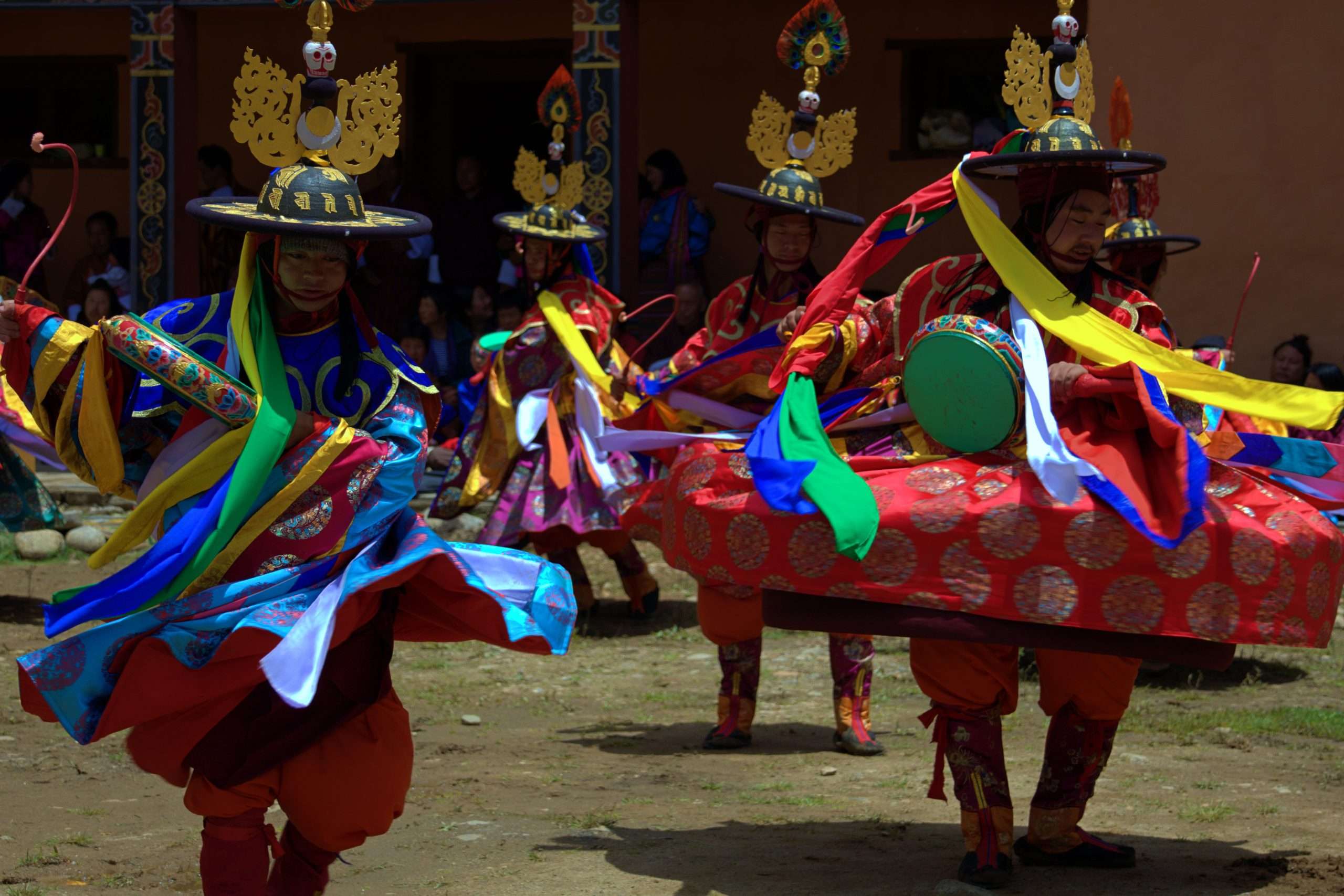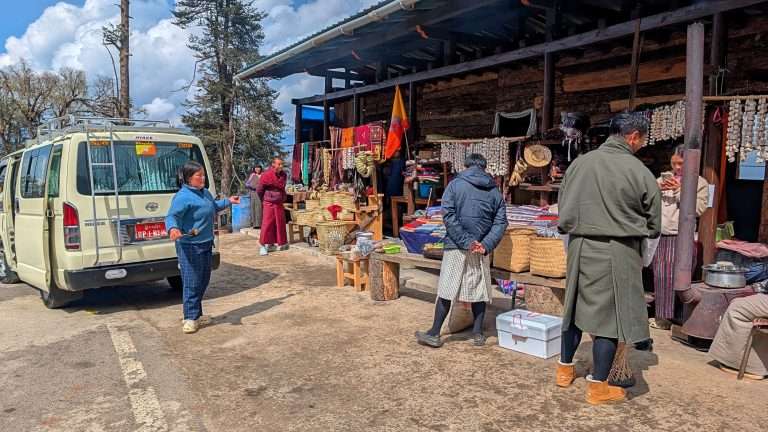EXCELLENTVerified Cultural immersion in Bhutan Omsha created a custom itinerary for our tour to Thimpu, Paro and Punakha. Our guide Namgay met us at the airport and was courteous, friendly and hospitable throughout. Her knowledge of temples and dzongs was extremely thorough and her enthusiasm to share stories of her culture and good humour made for a truly memorable trip. She took us to some truly spectacular locations and made it a fantastic trip. We will be coming back to Bhutan and hope to see Namgay and our driver Tsewang in future!Posted onVerified We miss Omsha already! Omsha is a fantastic and accommodative travel agency…ideal for visiting Bhutan. From the moment we arrived to the moment we left, we felt very well taken care of. Our guide, Bijay, was kind, fun, knowledgeable and a pleasure to spend 10 days with. We would recommend Omsha to anybody visiting the beautiful land of Bhutan.Posted onVerified Magical experience in Bhutan An excellent experience, loved the country, the people, the scenery, and the food. This wouldn't have been possible if it weren't for Omsha travel. We evaluated several companies but found Omsha to be the most responsive, flexible, and competent. Our guide, Sanom, was excellent, knowledgeable, and accommodated our needs. The driver, Sharup, made us feel comfortable and safe. I highly recommend Omsha for your Bhutan travels.Posted onVerified Best of the best in Bhutan Omsha provided us with the trip of a lifetime. Nawang was patient and responsive as we created a custom tailored tour. He found off the beaten path activities that provided an intimate look at day to day life in Bhutan. Our guides Sonam and Tashi were warm, funny, and extraordinarily knowledgeable. We left the country feeling that we had gained new family. Thank you to Omsha from the bottom of our hearts.Posted onVerified Beautiful Bhutan Great experience! Fast and responsive communication right from the first WhatsApp message. Visa was sorted very smoothly and everything worked out as planned. I had a very kind and respectful tour guide (Lhazin Dorji) and a reliable driver who ensured a memorable stay. I really enjoyed my short stay in the land of the thunder dragon.Posted onVerified Bhutan Tour OMSHA Travel I had wonderful experience during our tour in Bhutan with OMSHA travel, our tour guide Tashi Tenzin and driver Sun-Zu were exemplerary, very friendly and accommodating in our tour. They guide us in every tourist spots we go and make sure we are safe, and enjoy every moment during our tour. One of the best tour guide and driver I've had. I will highly recommend them wheh you visit Bhutan. I will give them ⭐️⭐️⭐️⭐️Posted onVerified Extraordinary! ❤️ The experience is superb! Plus having one of the bests tour guides- nothing can be asked for! It wasn’t an awkward experience day by day, I get or rather we felt comfortable with them. Total happiness and very good experience..🫶🏻 we were taken cared well by Tashi Tenzin and Sanju!Kudos to them! It was also a hassle free experience and no hints of no can be given to the services provided! It was seamless even though our flight was delayed..Really this country has a lot to offer so the only regret is not having more days to stay and explore more..❤️👍🏻👏🏻All the bestPosted onVerified Eyeopening Experience We booked our Bhutan trip with OMSHA Travel and couldn’t be happier with the experience. We entered Bhutan via the India–Bhutan land border and OMSHA arranged everything seamlessly from the airport pickup in India to ensuring our safe entry into Bhutan. As two young ladies traveling together we truly appreciated the sense of security and care they provided throughout.Our 4D3N itinerary was packed and while we enjoyed every moment I would recommend staying longer if possible. Bhutan has so much to offer and travel time between destinations can take up a fair portion of the day. Sharing a general idea of what you would like to see beforehand also helps OMSHA customize the trip perfectly.A highlight was definitely the Tiger’s Nest Monastery. The hike is breathtaking but also steep and challenging so being reasonably fit is important to fully experience it.Overall OMSHA Travel made our Bhutan journey smooth, safe and unforgettable. Their attention to detail and hospitality left us with lasting memories. Highly recommended.Posted onVerified Good Experience With Sonam and Sunzu We found Omsha Travel as we were sourcing how to get from India to Bhutan overland and his website was very informative. He was also very quick with his replies on Whatsapp which we appreciated a lot. We had a 4D3N tour in Bhutan and the tour was very flexible and customisable, allowing us to choose wherever we wanted to go. Our guide and driver was Sonam and Sunzu (Soju) who were so friendly and we hit it off so well~ they treated us like friends and the conversations with them made us learnt so much about Bhutan. Sonam is very knowledgable with all the history and Sunzu drives very smoothly. Also, the hotels were top notch with very good views👍 We enjoyed the stay and could rest properly after a long day.If I could change anything about the trip, I would stay for more days to fully appreciate the beauty of Bhutan.Posted onVerified A smooth trip The tour was well organised and went smoothly. Appreciate the flexibility of the arrangements in taking into account our energy levels. The guide Sonam was fun and engaging, giving us many stories on Bhutanese culture. The drive was smooth too, thanks to our driver Tewang. All in all, a great trip.
Bhutan Tour Packages:
Travel Tips:
Blog Posts:
- Royal Highland Festival at Laya Bhutan
- Gangtey Gonpa Tshechu – A Spiritual Celebration Amid the Valleys of Phobjikha
- France to Bhutan Travel Guide: Everything You Need to Know
- Flights from Sydney to Bhutan via Bangkok: A Complete Guide
- Bhutan vs. Nepal Travel: Which Himalayan Country Should You Visit?
Contact us:
Nestled in the serene Ura Valley of Bumthang, the Ura Yakchoe festival offers a spiritual and cultural immersion like no other. Celebrated with grandeur and deep devotion, this sacred annual event showcases Bhutan’s spiritual heritage through the powerful medium of dance, storytelling, and ancient ritual. Held in one of the most picturesque valleys in Bhutan, Ura Yakchoe is more than a festival — it is a celebration where myth comes alive, and tradition takes center stage.
What is Ura Yakchoe?
Ura Yakchoe is a masked dance festival (tshechu) that typically takes place in May, coinciding with the blossoming of the valley and the planting season. Hosted in the quaint village of Ura, one of the highest settlements in Bumthang, the festival honors local deities, cleanses negative energies, and invokes blessings for a bountiful harvest.
At the heart of the festival is a sacred relic — a mystical statue of Chador (Vajrapani), believed to have been miraculously left behind by a lama who came to the valley centuries ago. According to legend, the lama appeared at a woman’s home and requested water. When she returned, he had vanished, leaving behind the relic — now enshrined and revered by the villagers.
The Rituals and Masked Dances
The festival spans three to five days and is filled with sacred masked dances (cham), traditional songs, and community rituals. The dances are not just performances; they are spiritual enactments meant to appease protective deities, ward off misfortune, and celebrate Bhutanese Buddhist teachings.
Monks and laymen dress in vibrant costumes, wearing masks of gods, demons, and animals. Each dance tells a story — of cosmic battles, moral lessons, or the triumph of compassion over evil. The highlight is the dance of the Yak, which gives the festival its name “Yakchoe,” meaning “Dance of the Yak.”
The Blessing of the Relic
A central moment of Ura Yakchoe is the public display of the sacred Chador relic. This rare and spiritually significant statue is unveiled during the festival for devotees to receive blessings. Locals and pilgrims travel from nearby villages to witness this powerful moment, offering butter lamps, khadars (ceremonial scarves), and prayers.
The presence of the relic is believed to heal illnesses, cleanse sins, and bring peace and prosperity. For many, the opportunity to be blessed by this sacred object is the highlight of their spiritual journey.
A Cultural Tapestry of Tradition and Community
Ura Yakchoe is as much about community bonding as it is about religion. It brings villagers together to celebrate, share food and drink, and reconnect with their cultural roots. Visitors are warmly welcomed to join in the festivities, often offered local delicacies like ara (traditional rice wine) and wheat pancakes.
The festival is also a time for Bhutanese families to return home, making it a lively and joyous reunion that strengthens the social fabric of the region.
Why You Should Attend
Visiting Ura Yakchoe is a chance to experience Bhutanese culture in its purest form — untouched by commercialization and deeply rooted in ancient beliefs. The Ura Valley itself, with its cobbled paths, whitewashed houses, and rolling pastures, is one of Bhutan’s most picturesque destinations. Pair that with the rhythm of cymbals, chants, and swirling dancers under crisp spring skies, and you have a festival that feels truly magical.
Whether you’re a cultural enthusiast, a spiritual seeker, or a photographer in search of timeless moments, Ura Yakchoe offers a unique window into Bhutan’s soul.
Practical Information
- Location: Ura Village, Bumthang District, Central Bhutan
- Best Time to Visit: May (exact dates vary based on the Bhutanese lunar calendar)
- Duration: 3–5 days
- What to Bring: Warm clothes (nights can be chilly), a camera, a respectful attitude, and an open heart.
Final Thoughts
Ura Yakchoe is not just a festival — it’s a living story passed through generations, blending myth, devotion, and the sacred power of dance. If you’re planning a trip to Bhutan, don’t miss the chance to witness this unforgettable cultural celebration. It’s one of those rare experiences that leaves you not just with beautiful memories but a deeper understanding of Bhutanese spirituality and harmony with nature.





